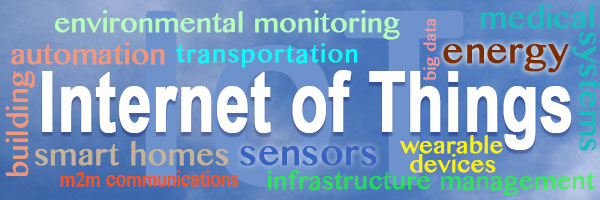The Internet of Things is poised to soar in the enterprise, a new survey from IDC indicates, with the planning stage rapidly shifting to deployment.
Nearly 73 percent of about 2,500 respondents to the firm’s IoT Decision Maker Survey said they already had deployed IoT solutions or would do so within the next year, the firm reported Tuesday.
The survey respondents came from 15 countries, including the U.S., Brazil, China, India and Germany. They represented enterprises with 500 or more employees. At least half of them were familiar with the term “IoT,” IDC said.
The survey was conducted in July and August.
The IoT is particularly strong in healthcare. Seventy-two percent of respondents from the healthcare industry considered it a strategic initiative.
Strong responses also came from the transportation sector, with 67 percent of respondents identifying IoT as strategic, and manufacturing, with 66 percent expressing that view.
The government is trailing in IoT awareness and often lacks an understanding of the basics, IDC said, based on the responses of survey participants.
Although security is one of the challenges participants cited most frequently, it was not the top concern in the latest survey. It has been replaced by costs.
Enterprise Use Cases
The IDC survey results, in some respects, echo those of a report on IoT deployment that Strategy Analytics released this summer.
Nearly 30 percent of businesses worldwide had begun limited deployments of the Internet of Things, the Strategy Analytics IoT 2015 Deployment and Usage Trends Survey found.
They ranged from small and medium-sized businesses to large enterprises.
The main use cases were IoT-enabled software and applications, IoT-enabled hardware and IoT standalone devices and systems.
Among the top IoT applications cited were office security and video surveillance, smart building controls, billable services, financial analytics, healthcare analytics and healthcare diagnostics.
Both existing and potential IoT users wanted to solve pragmatic and pressing business issues that impact daily operations.
More than 450 businesses worldwide across 45 vertical markets participated in the Strategy Analytics survey, which was conducted in June. They were in the financial, insurance, real estate, manufacturing, professional services, education, public sector, healthcare, pharmaceutical, telecoms, media and technology sectors.
About one in four respondents said their companies currently had no IoT deployment plans, and 42 percent of respondents were undecided.
Challenges to Implementation
IoT security, integration and interoperability with existing and legacy systems, and the potential confusion resulting from the need to deal with multiple IoT vendors and platforms were the biggest impediments to deploying IoT, the Strategy Analytics survey found.
Old IT hands will remember these are the same kinds of problems that plagued the move to client/server. There were debates about distributed versus centralized security, as well as integration with existing software and applications.
Many enterprises decided to purchase best-of-breed packages off the shelf, but then found they had to turn to systems integrators to put the pieces together.
That led to problems with service levels, and when hardware or software failed, the vendors of the different packages blamed each other and the systems integrators.
How likely is a repeat of this scenario as the IoT takes off?
“It won’t happen that way,” said Laura DiDio, director of IOT, enterprise research and consulting at Strategy Analytics.
Companies will partner with each other to fill the gaps in their offerings, and “you’ll see very targeted mergers and acquisitions,” she told the E-Commerce Times.
“In the digital age, no one vendor can dominate the market the way we saw IBM do with mainframes and Microsoft with PC operating systems,” DiDio explained. “Everybody has to be in bed with everybody else.”
For example, Apple and IBM teamed up last year to go after the enterprise market, she noted.
Coping With the Issues
The problems of security, integration and interoperability with existing legacy systems are bound to be solved because “the market leaders are in this space,” DiDio pointed out. Those leaders include IBM, Cisco and Microsoft, with its Trustworthy Computing Initiative.
There might be some problems as standards get worked out — several incompatible standards for different aspects of the IoT already exist.
“It’s not going to be sunshine, apple pie and rainbows,” DiDio suggested. “However, we’re not going to see the internecine warfare and bloodletting around standards that characterized things in the 80s, 90s and early 2000s.”
Sheer pragmatism will damp down internecine warfare because “the technology can’t advance if the different components, devices and software protocols don’t work together,” DiDio said.
The International Telecommunications Union already has set up a new study group to address standardization requirements of IoT technologies.
An all-encompassing security solution is not likely to be available soon, “because innovators are eager to rush their IoT products to market as rapidly as possible, and will not have the chance to test interoperability with all the potential possibilities,” said Richard Blech, CEO of Secure Channels.
“Therefore, the IoT products will likely have to fail first, then be corrected or patched,” he told the E-Commerce Times.
But Is It Safe?
Security — or the lack of it — may turn out to be a nightmare for enterprises moving to the IoT.
Connecting things to other things over a multitude of variable, undefined networks “will leave many vectors to attack, Blech warned.
“Existing security solutions were not designed to accommodate the massive scale of the Internet of Things,” ZitoVault CEO Tim McElwee told the E-Commerce Times. “Moving forward, it becomes very important to create secure connections on the fly between IoT devices and cloud-based applications.”
























































Social Media
See all Social Media